- Aleph
- Anna Gat
- Ariel LeBeau
- Austin Robey
- David Blumenstein
- David Ehrlichman
- David Kerr
- Devon Moore
- Dexter Tortoriello
- Drew Coffman
- Drew Millard
- Eileen Isagon Skyers
- FWB Staff
- Gaby Goldberg
- Greg Bresnitz
- Greta Rainbow
- Ian Rogers
- Jessica Klein
- Jose Fernandez da Ponte
- Jose Mejia
- Kelani Nichole
- Kelsie Nabben
- Kevin Munger
- Khalila Douze
- Kinjal Shah
- Kyla Scanlon
- LUKSO
- Lindsay Howard
- Maelstrom
- Marc Moglen
- Marvin Lin
- Mary Carreon
- Matt Newberg
- Mike Pearl
- Mike Sunda (PUSH)
- Moyosore Briggs
- Nicole Froio
- Original Works
- Ruby Justice Thelot
- Ryne Saxe
- Simon Hudson
- Steph Alinsug
- The Blockchain Socialist
- Willa Köerner
- Yana Sosnovskaya
- Yancey Strickler
- iz

Thu May 26 2022
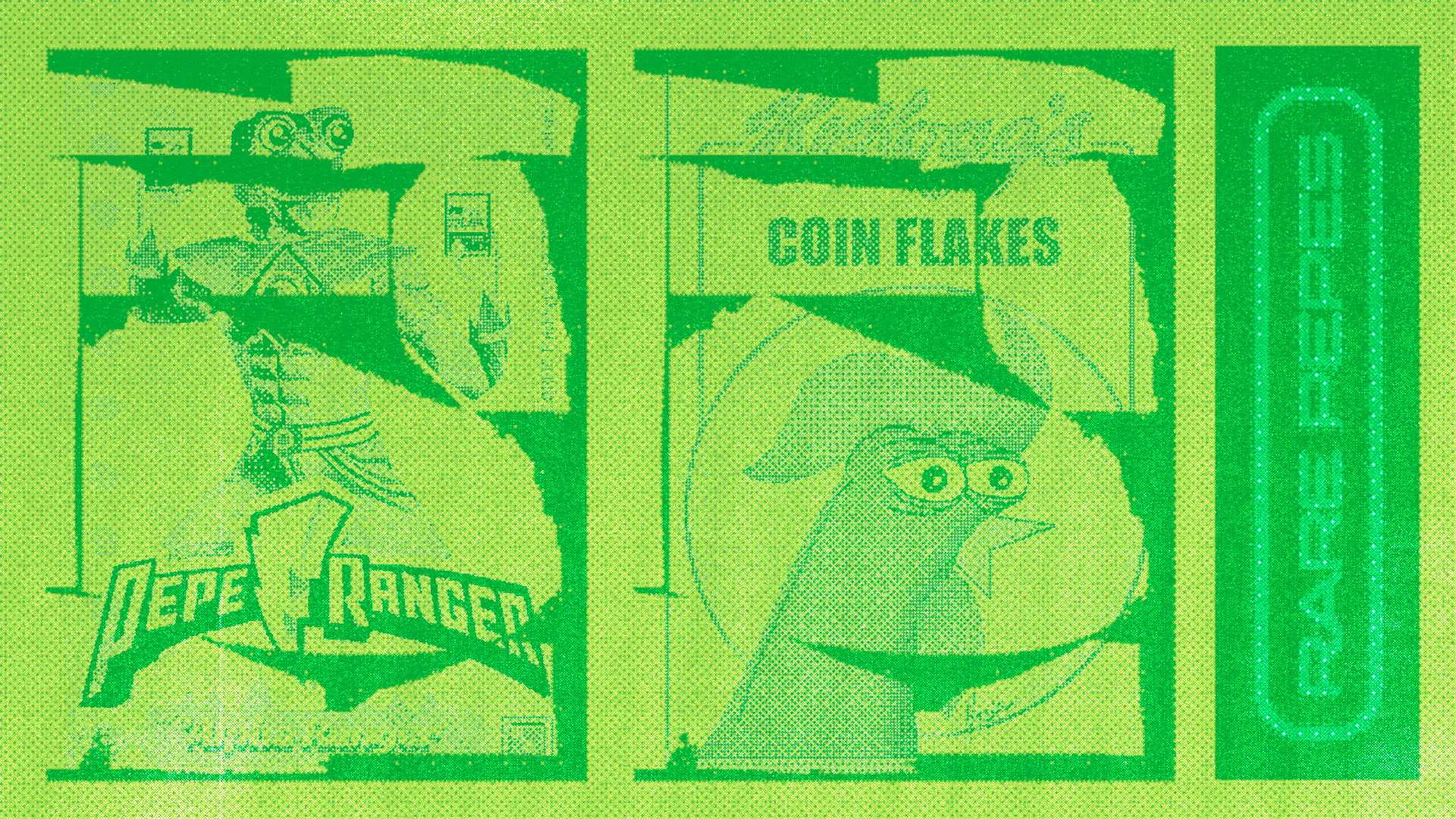
NFTs did not start with Ethereum. They began with Bitcoin, or rather with a fork of the Bitcoin blockchain called Namecoin, where in 2014, an artist named Kevin McCoy minted a pulsing fluorescent Octagon that is widely believed to be the world’s first non-fungible token.
As early Bitcoin adopter Joe Looney tells it, though, NFTs as digital art didn’t really become a thing until 2015, when a small independent gaming company based out of Switzerland, EverdreamSoft, released a game with tokens that looked almost like digital Magic the Gathering cards. Made via the Bitcoin protocol Counterparty, which allows users to easily create and exchange digital tokens, these collectibles featured Dungeons and Dragons-style imagery but with nods to the crypto world (a faceless wizard stands in for Bitcoin’s pseudonymous creator Satoshi Nakamoto, for example). And they “set the stage,” Looney recalls, for the creation of more assets that were not strictly “money” on the Bitcoin blockchain.
Looney, a mechanical engineer who lives in New Jersey, was taken by Bitcoin and the Counterparty protocol. As a hobby, he built a wallet for buying and selling assets built on Counterparty, including Spells of Genesis cards. Meanwhile, a small handful of other early adopters had taken to creating their own coins on the protocol, just for fun.
One day, a member of this group posted a different sort of card to the Counterparty group chat. It was a twist on the popular character Pepe the Frog, a pouty cartoon created by an artist named Matt Furie in his 2006 “Boy’s Club” comic, who gets into mischief with his “slacker” roommates.
By 2015, Pepe’s influence had already extended far beyond Furie’s comic, invading almost every corner of the meme-making internet, from Reddit to 4chan. Around 2016, it would also get plenty of mainstream media attention for its adoption by the alt-right, though Furie, a self-identified Bernie supporter, eventually responded by waging a legal battle against alt-right personalities using Pepe imagery. All types of very online people were using the frog prior to that, however, including the crypto community. (A 2020 documentary about Furie, Feels Good Man, would later help liberate Pepe from his more nefarious associations by exploring the origins and wide reach of the meme.)
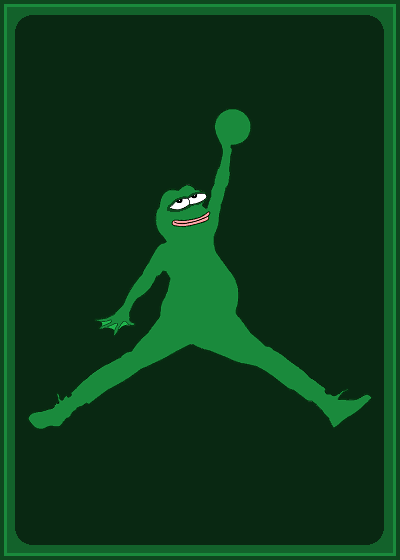
The particular version of Pepe that appeared in the Counterparty group chat, posted by a guy named Mike, was a crypto Pepe. In a trading card format, it featured the likeness of the real-life Satoshi Nakamoto — a man who happened to share the name of the pseudonymous Bitcoin white paper writer — but with a green, Pepe-like face. Mike’s card served as a playful nod to the meme’s use in various crypto chats, where people were remixing the image into all manner of hyper-referential crypto shitposts. When Looney saw it, he immediately thought of his Counterparty wallet: “Here’s a good use case for this thing that I made.”
It was the first of what would become a series of 1,774 Rare Pepe Cards, one of the earliest known collections of blockchain-based tokens that functioned strictly as digital art. Looney reskinned his generic Counterparty wallet to make it Pepe-themed, and as more people started creating Rare Pepes, they began using the wallet to trade them. Many still are today: “As a hobbyist developer,” says Looney, “it’s very rewarding to have people actually use the thing that you made.”
With the influx of Rare Pepes came a need for some level of curation. Looney saw the Rare Pepes that appeared in the wallet as a reflection on him, so he wanted to ensure that only “safe for work” cards made it into the official set. With the help of Mike, who reviewed submissions to the Rare Pepe Directory to make sure they weren’t too “low effort,” inappropriate, or alt-right, Looney helped shape the collection. And though they ultimately closed it to new submissions in 2018, the original Rare Pepe set continues to inspire additional open collections, like Fake Rares and Dank Rares.
The media tends to relegate Rare Pepes to a footnote when telling the history of NFTs, instead focusing on Ethereum-based collectibles like CryptoPunks, which, in 2017, became the first 10,000-image set of collectible, digital tokenized art pieces with different characteristics that signified their rarity – a model the Bored Ape Yacht Club founders, and many other NFT creators after, borrowed for their projects. But the idea of blockchain-based tokens coded to connote a one-of-a-kind digital artwork more or less dates back to Rare Pepes.
Today, Bitcoin-based NFTs, including Rare Pepes, are having a comeback. Between more people learning about their OG status, Matt Furie himself getting in on the game, and Bitcoin gas fees going for lower than Ethereum’s, the time seems ripe for Bitcoin enthusiasts to usher Rare Pepes into the NFT collecting mainstream. A Rare Pepe sold for more than $3.6 million in a Sotheby’s auction back in October, fetching the highest price among the lots (which also included a Bored Ape NFT). Months before that, an edition of the very first Rare Pepe card sold for the equivalent of $500,000 on OpenSea.
Looney is somewhat wary of the press about Pepe, and doesn’t open up about that time very often. In a rare interview, he spoke to Works in Progress about the story of vintage Rare Pepes, the community that surrounded them, and their 2020s resurgence.
This interview has been edited and condensed for clarity.

How did Rare Pepes emerge from the Spells of Genesis card-making community?
Come September 2016, the Counterparty platform general chat had moved from Slack to Telegram. A user named Mike posted what came to be the first Rare Pepe card, which was actually called “Rare Pepe.” It was the Nakamoto card — if you’ve been in NFTs or know anything about Rare Pepes, it’s the first one [that would come to mind].
He threw that in the chat and said, “Hey, I made this Rare Pepe card, and I put them up for sale on the DEx,” which is the built-in exchange platform in Counterparty. He’s like, “They may be worth millions of dollars one day,” which was prescient at the time.
Was he joking about the millions of dollars thing?
Oh, yeah. It was really all jokes at that point. But it was kind of perfect timing, because unbeknownst to us, it was the tail-end of the previous bear market, which was like two years long. Then 2017 was the Bitcoin run up to $20,000. Before that, people were looking for something to do that wasn’t necessarily opining that the price had been moving sideways for two years, and nothing much was happening. Everybody latched onto these Rare Pepes. Instantly, people wanted to make their own.
How did other people come into the project?
None of it was planned. It was everybody reacting to Mike creating this thing and posting it to [our] Telegram chat. It was all very organic from that point.
Once other people decided they wanted to start making Rare Pepes, I created the wallet. I ran into a situation where it was like, Okay, people can create these, but we need to curate to some extent. I’m running this wallet, and then at exactly the same time — I think it was a week after Mike dropped the first Rare Pepe in the chat — the whole “Pepe the frog is racist” [thing] came out. Literally, bang, bang, bang — it happened all in a row.
I didn’t realize that was all at the same time. I thought Pepe had already been co-opted by the alt-right at that point.
It was definitely a 4chan meme. But it wasn’t in the mainstream as this bad, racist meme. It was used heavily in crypto in 2014, 2015. Prior to Rare Pepes coming out, it was always associated with the happy Pepe when the price [of Bitcoin] goes up, and the sad Pepe when the price goes down.
In the Feels Good Man documentary, this group of data analysts said that the Pepe meme is the one meme they can find in every internet subculture. It’s the only meme that seems to cover everybody, which is why I think it’s so prevalent even now. There was the alt-right stuff in 2016, 2017, and then come 2018, 2019, it was all over the Free Hong Kong movement. The fact that it was being used in crypto earlier on is not a huge surprise.
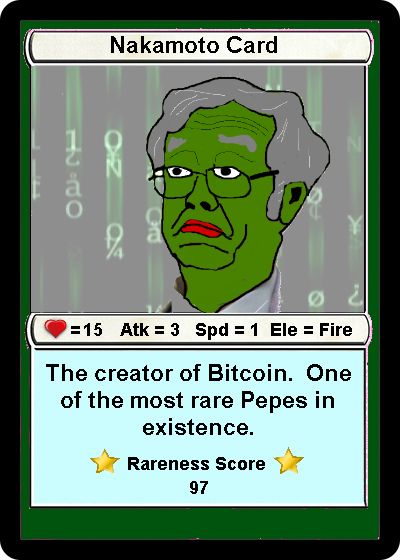
Since the creation of the Rare Pepe wallet coincided with alt-right Pepe memes, did that present a problem with submissions? Like, were people submitting white supremacist Pepes to the Rare Pepe directory?
I didn’t know, because they were all going through Mike first. He might have gotten a few that no one else ever saw because he screened it. But it really wasn’t an issue, because it was a whole separate community that wasn’t our subculture. It was a use of the Pepe the Frog meme that got a lot of attention in mainstream media, but that wasn’t how it was being used in crypto.
If you look at the early Pepes, a lot of them make fun of crypto projects — a lot of self-referential stuff. We knew [the alt-right Pepe memes] were happening, because it was in the news, but we were just like, Fuck that, we’re going to do what we want to do with it. That’s not us. The meme has been around for years. Clearly, it was an internet phenomenon that this political subculture took and ran with, and then got media attention because of that. Obviously, it wasn’t something we were going to allow in the directory. There are all sorts of Rare Pepes that I certainly wouldn’t want to host on a website.
How did you and Mike and a few other guys become the official curators of the Rare Pepe Directory?
We’re the Rare Pepe scientists. Mike curated the first 1,000 Pepes himself. It was a very rudimentary process. There was a spam filter, and one of the things was no low-effort Pepes. You couldn’t just Quick Draw a frog in five seconds and submit it; Mike probably wouldn’t accept that. One of the things Mike did, which was interesting, was he wouldn’t just say, “No, your Pepe doesn’t get in.” He’d be like, “No, this is low effort, you gotta put some more effort into it and come back.”
Then the Pepes had to be safe for work. That would help filter out any problematic Pepes, although there weren’t many of those submitted.
As time went on, we came to realize curation is really important. It helps bring up the level of Rare Pepes.
I imagine it was a lot of work curating all these Rare Pepes and running the wallet. Did it become almost a full-time job?
Yeah, it was. It wasn’t as fun towards the very end — it felt like a job. And I did it because it was fun. Once it started to feel not as fun, it was time to close the directory [in late 2017]. We thought about closing it multiple times before that, just to give Mike a break.
Then we actually reopened it after the Rare Art Festival in early 2018 [where a Homer Simpson Rare Pepe sold for close to $40,000], because everybody was so excited about it. We only had it reopen for three or four weeks. In that time, we had the next 774 Rare Pepes submitted. And we were like, Okay, it’s too much. Then we closed it in early March 2018.
When we first closed the directory, we decided to, at the 1,000 card mark, not let anyone else submit until Matt Furie created his own Rare Pepe. We tried to get in touch with him, but no one could. At the time, these things weren’t popular outside of a very small, niche group — even within crypto it wasn’t super popular. I’m sure Matt got a lot of wacky emails and was like, “What the hell is this?” and just ignored it.
We ended up making a placeholder Rare Pepe for Matt to claim if he ever wanted to, which he ended up doing at the end of last year.
How did that finally happen?
He started doing his own NFTs. He sold the first Pepe the Frog instance in the “Boy’s Club” comic for like a million dollars. Once he did that, he realized that Rare Pepes were kind of the progenitor of all of this. Without them, he might not be selling his own [NFTs].
I reached out around September of last year and ended up having a couple chats with Matt and his cousin, who was more on the developer side and created the site that Matt issued his NFTs on. And he decided he’d make his Rare Pepe. As far as I was concerned, that was the final checkbox, the closing of the book on Rare Pepes.
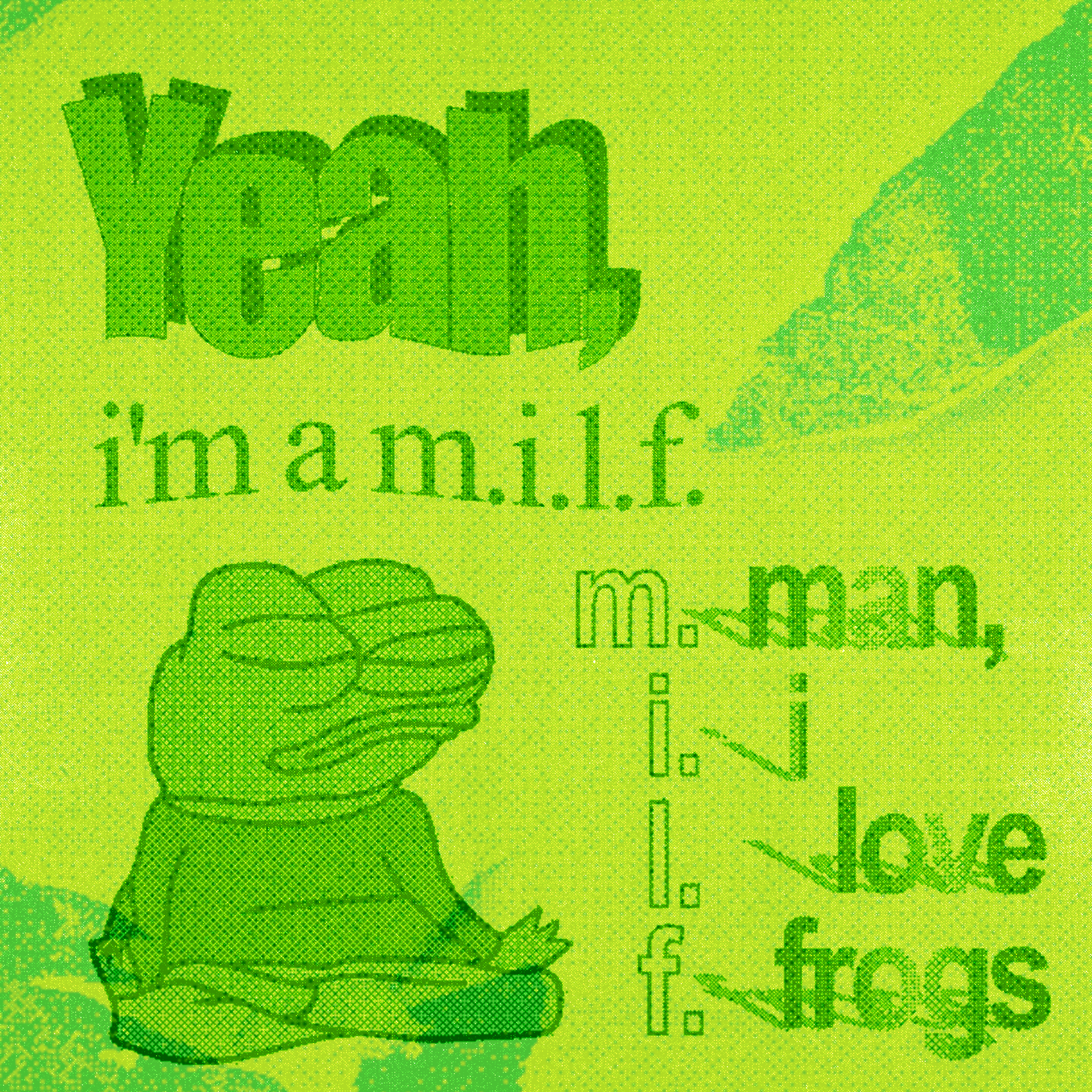
You called Rare Pepes “the progenitor of all of this.” Could you elaborate on what you mean by that?
I see Rare Pepes as the beginning of crypto art. It’s not a coincidence that the term “rare” is used often in the NFT space — like Super Rare and Rare Art Labs, which is now defunct, and Rarible, another bigger [NFT] platform. That came from Rare Pepes. It’s just a really good way to describe NFTs.
A Rare Pepe sold for $3.6 million at Sotheby’s in October 2021. When you learned about that, did you think, Okay, this makes sense in the context of what’s been happening with NFTs, or did it come as a surprise?
It definitely made sense. It certainly wasn’t the highest-value NFT at that point. Basically, once I saw CryptoPunks selling for six figures in spring of 2021, it was only a matter of time before people found Rare Pepes.
There was a narrative at the time that CryptoPunks were the first NFTs. Well, if there’s something before the first, then it would naturally command high values, too.
How do you feel about that narrative where people tend to credit CryptoPunks and Ethereum-based NFTs as the originals instead of Rare Pepes?
It bothered me more before Rare Pepes were rediscovered over the summer last year. But I think the CryptoPunks story is an easier one to tell. It’s very non-threatening, these pixelated faces. There are these two developers in New York that made this thing, and it became super popular. With Pepe the Frog, it’s like, What’s this? That racist meme from the 2016 election?
It’s funny, too: that Rare Pepe selling at Sotheby’s for $3.6 million was the highest-selling item in that whole auction. But when you look at media about that auction, the headline image is the Bored Ape that was the second highest-selling thing. Even when it commanded the highest price, it’s still getting glossed over.
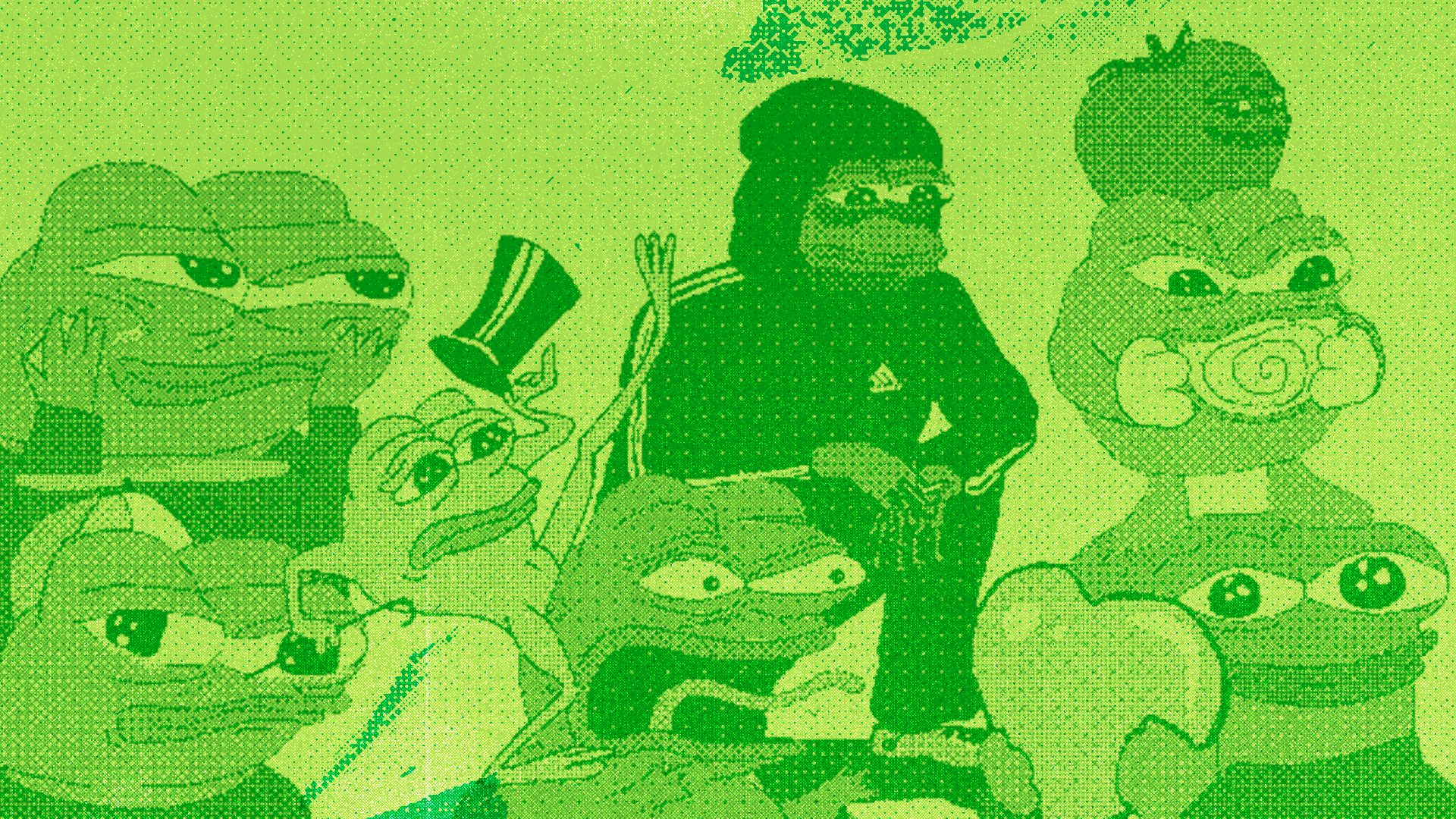
Bitcoin-based NFTs have been experiencing a sort of Renaissance lately. Could you describe what that looks like?
I think Bitcoiners in general have a chip on their shoulder. You’ve had years and years of people telling you that that thing you like is stupid, right? The Pepe meme in general lends itself to that “I’m gonna do what I want, I don’t care what anyone else says” mentality, which is very much a Bitcoiner mentality.
A lot of Bitcoiners that weren’t necessarily into NFTs got into Rare Pepes, because it was this cool Bitcoin thing that was not super popular in the mainstream. Then, I think in October, November [2021], people started making Fake Rares. Anything that wasn’t a Rare Pepe was a Fake Rare.
Because NFTs had gotten so popular, and Rare Pepe had gotten so popular over the summer and into the fall of last year, artists wanted to make Bitcoin NFTs. But they wanted to make them in a way, like Rare Pepes, where they were part of a curated set. Scrilla, who’s one of the early Rare Pepe artists, decided to make Fake Rares its own thing and have the Fake Rare directory. Once he did that, it opened the floodgates to other directories. There’s a Dank Rare directory; there’s a Rare Wojak directory.
One of the things that drove people to Bitcoin NFTs was fees. That was one of the things that drove people to use Ethereum in 2017, as opposed to Counterparty and Bitcoin, because Ethereum fees were much lower at the time. Now it’s the opposite. Ethereum-based artists saw they could start making their own Pepes and submit them to the Fake Rare directory, or the Dank directory, and the fees are less than $1 for a transaction. Whereas if I’m going to do something on OpenSea, it’s going to cost somebody $30 to buy.
Even with all the prices crashing down again, those [Pepe] Telegram chats are still pretty active. People were like, “Yeah, the price is down, but I can still buy this Dank Rare for 20 bucks. It takes my mind off what’s going on in the greater markets.” In a lot of ways, that’s what Rare Pepes were at the beginning. They took everyone’s mind off the bear market in 2016.
How many Rare Pepes do you own? And do you have any favorites?
I have a pretty big collection. I got through the whole bull market and didn't sell any that I didn’t have a duplicate of, because I just love them so much.
It’s hard to pick a favorite. Hair Pepe is definitely one of my favorites. Then Pepe Peanuts, because it’s so dumb, but somehow it’s funny. I use that one as an example of when a low-effort Pepe is still good. The Pepe Whale is another good one.
Overall, Rare Pepes are a good collection to look through, because they went from a bear market in the beginning, and then through the end, it was the bull market. We probably closed the directory [for the second time] right at the peak of the last bull market — like, March 2018 was when it started to fall off the cliff again. The earlier Rare Pepes are more joking about prices going down, and then towards the end, it’s the more euphoric Pepes. The story of Rare Pepes is very much the story of the overall cryptocurrency space.
Jessica Klein is a freelance journalist who's been covering crypto/blockchain since 2017, with work on that and other topics featured in The Atlantic, Fortune, The New York Times, The Guardian, Slate, and Teen Vogue.
Pepe Ranger, Coin Flakes, and Air Pepe courtesy Mr. Hansel. Nakamoto Card by Mike. Graphics by Fiona Carty.


